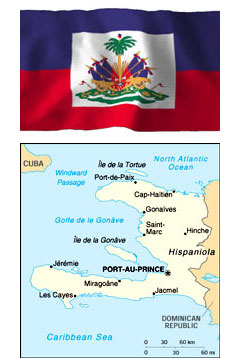By Saeed Shabazz-Staff Writer-
‘Ark of Return’: Telling the stories of 15 million slaves in a United Nations permanent memorial
UNITED NATIONS (FinalCall.com) – Rodney Leon, the son of Haitian immigrant parents, was chosen from a field of 310 entrants in 83 nations to design the permanent memorial at the United Nations remembering the Trans-Atlantic Slave Trade and its African victims.
A special unveiling ceremony was held at UN headquarters in New York on Sept. 23. UN Secretary-General Ban Ki-Moon said the memorial “will serve as a reminder of the bravery of those slaves, abolitionists and unsung heroes who managed to rise up against an oppressive system, fight for their freedom and end the practice.”

Mr. Leon, a Manhattan-based architect known for his design of the African Burial Ground Memorial in lower Manhattan, explained to The Final Call that his winning design “The Ark of Return” is an educational tool, not just a memorial. “I designed the Ark of Return as a sacred space to psychologically and spiritually transport visitors to the United Nations to a place where acknowledgement, education, reflection and healing can take place,” he said.
According to the UN, over 12.5 million Africans were forcefully removed from the Senegambia region in the northwest to the Indian Ocean island of Madagascar. The UN also acknowledges, “Many accept that as too a low-estimation.”
“The Transatlantic trade in African captives, which lasted from 1501 to 1866, formed the backbone of European (especially British, Danish, Portuguese, French, and Spanish), industry and commerce for centuries. Africa’s development was severely damaged,” said the UN.

“Those who controlled the Trans-Atlantic Slave Trade made huge profits from death, misery and exploitation,” Mr. Ban said during a speech in 2010 commemorating the 1806 ending of the trade.
Our design will allow people to learn of and acknowledge the tragedy of the Trans-Atlantic Slave Trade and its global scale, said Mr. Leon. “I wanted the memorial to be something that invokes memory–almost a ritualistic experience–the image needs to be very powerful,” he said.
“I developed the triangular concept of the ship from the historic triangle created by the Middle Passage, the human sized figure of a body laying horizontally as almost suspended in air to communicate the horror endured by the millions of African people during the Middle Passage. And the reflecting pool known as ‘Lest We Forget’ with a three-dimensional map with Africa at its center, allows for our spirits to enter into the traditional African rituals of prayer and libation.”
The ceremony was also attended by Ambassador John W. Ashe of Antigua & Barbuda, who is the sitting president of the UN General Assembly, Jamaica’s Prime Minister Portia Simpson Miller and Haiti’s foreign affairs minister Pierre Richard Casimir.
“The design will undoubtedly serve to inspire the many persons who will visit the memorial and remind us to never allow such crimes against humanity ever again,” Ms. Simpson-Miller said.
Jamaica’s delegation to the UN has chaired the permanent memorial committee since 2007, raising the needed $5 million for the project. The seven-foot by twelve-foot memorial will be placed on a podium in the UN visitor’s plaza, according to Kurt Davis, Social, Humanitarian & Cultural Affairs counselor at the Permanent Mission of Jamaica to the UN.












